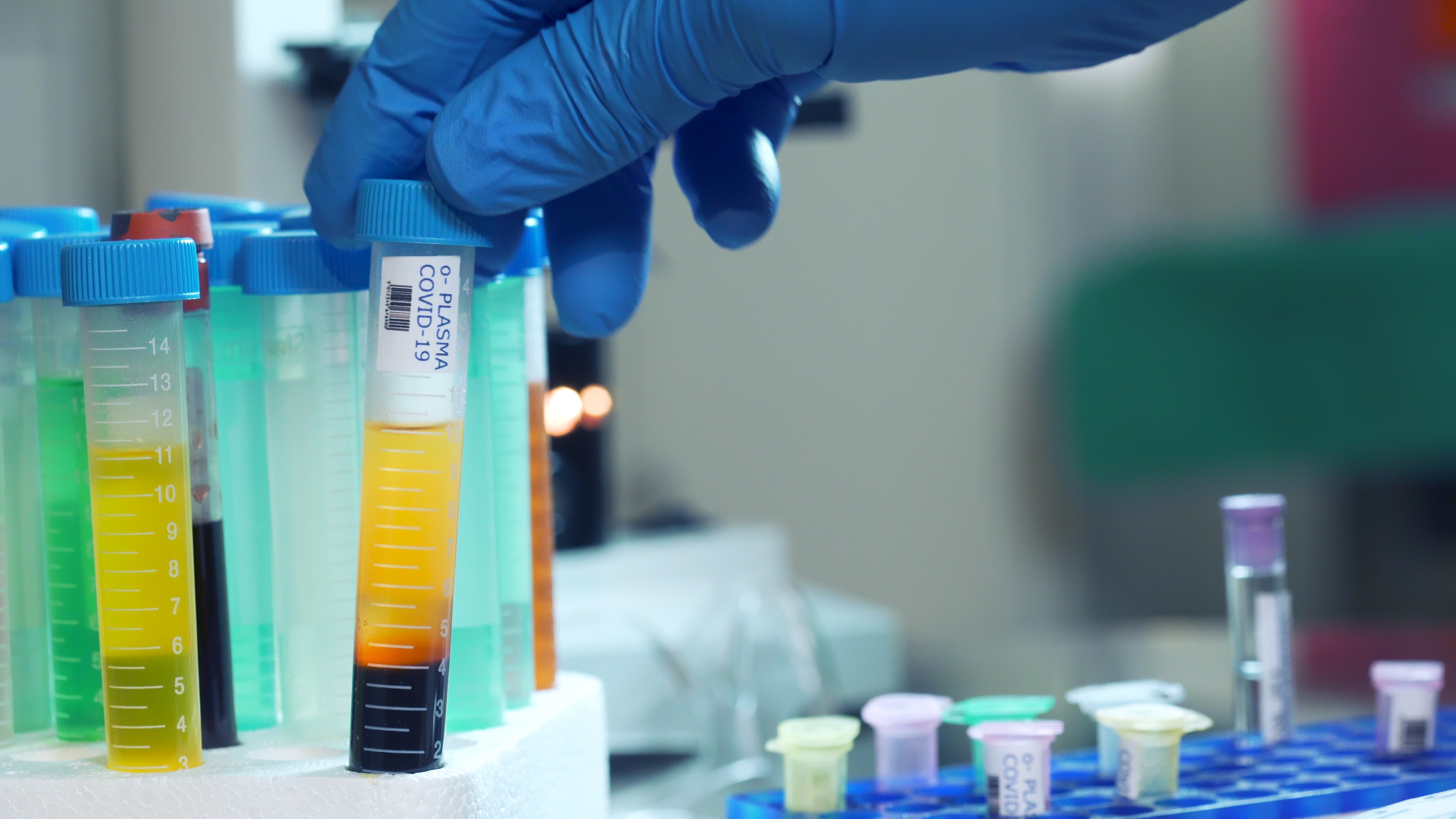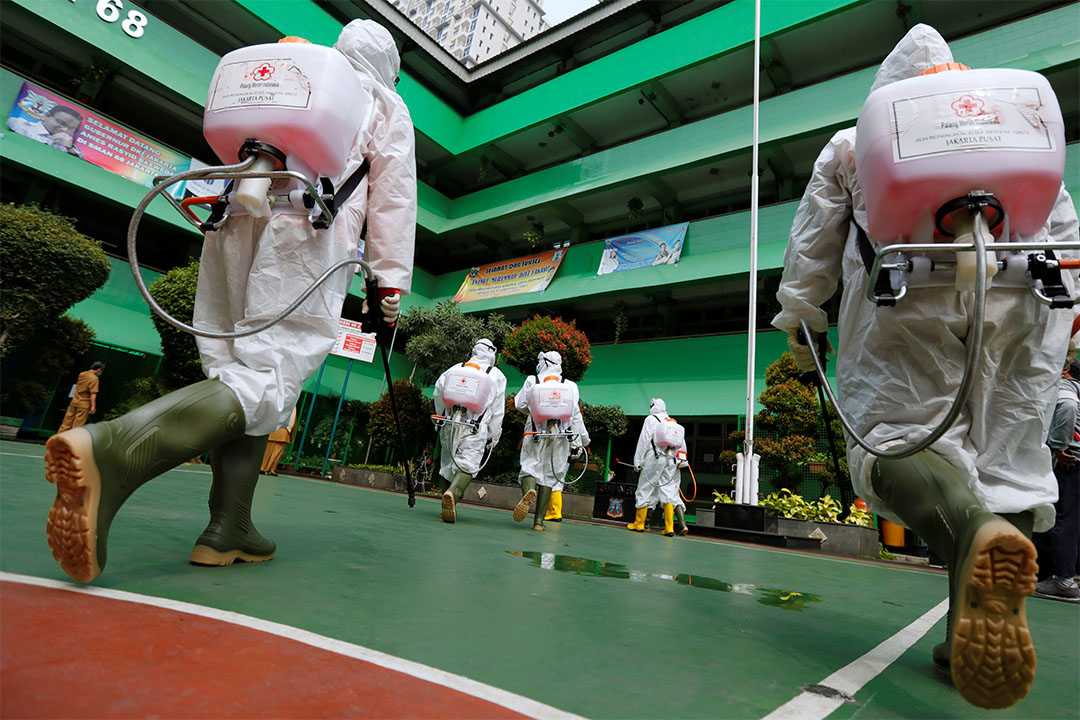
At a highly unusual Sunday night press conference, U.S. President Donald Trump revealed what he described as "a very historic breakthrough" in the fight against COVID-19 that "would save countless lives": The U.S. Food and Drug Administration (FDA) had issued an emergency use authorization (EUA) for convalescent plasma to treat people with severe COVID-19.
The authorization could allow more hospitalized patients to receive the antibody-rich plasma, which is donated by people who have recovered from the disease. But in the wake of Trump's announcement, which came a day before the start of the Republican National Convention, researchers struggled to sort the politics from the medical and scientific import of the EUA.
Trump, flanked by FDA Commissioner Stephen Hahn, claimed that convalescent plasma was "safe and very effective," and had "proven to reduce mortality by 35%"—what he called "a tremendous number." But that number has received a tremendous amount of scrutiny. It surprised even the researchers who conducted the study on which Trump apparently based declaration. "I don't know where the 35% number comes from," says Arturo Casadevall of Johns Hopkins University's Bloomberg School of Public Health, the last author of the study, which has been posted as a preprint but has yet to be peer-reviewed.
Randomized, controlled trials (RCTs), the gold standard for assessing therapies, haven't yet shown any benefit of convalescent plasma on COVID-19 patients. One such study, which includes thousands of patients, is underway as part of the Recovery trial in the United Kingdom. An FDA review of the request for the EUA—made by a branch of FDA's parent agency, the Department of Health and Human Services (HHS)—notes an RCT with small numbers of participants in China and another in the Netherlands. Both were stopped early and failed to show the benefits of convalescent plasma.
But the EUA rests heavily on data from the COVID-19 Plasma Consortium, funded by HHS to provide access to the treatment and assess its safety. The group has treated more than 90,000 patients at nearly 3,000 sites in the United States and its territories. That study has no untreated control group, however, so it cannot ultimately address whether convalescent plasma has any risks that outweigh benefits.
The treatment was allowed under the FDA's Expanded Access Program, which gives patients access to experimental treatments. Casadevall says this program requires burdensome, time-consuming paperwork that the EUA will do away with. That will be particularly helpful for understaffed hospitals that treat "underserved populations," he says. "I think the FDA made the right call. The political noise is unfortunate."
Others say the political noise is drowning out the science.
Hahn claimed at the press conference that Trump's 35% figure translates to 35 lives saved per 100 sick people. Casadevall and others suspect both numbers are based on a small subset of patients, and the closest data that fit seem to be from a group that was analyzed together because of the specific test that assessed the COVID-19 antibody levels in the plasma they received. In this group of about 3,000 people, 8.9% of those who received plasma containing high antibody levels died within 7 days, versus 13.7% of those who received plasma with low levels. While that is a 35% relative difference between the groups, the absolute difference, 4.8%, amounts to 4.8 lives saved per 100 sick people—not 35. And after 30 days, the relative difference between the groups had dropped to 25%. At that point, the mortality rates were 22.3% and 29.6% respectively among recipients of plasma with high and low levels of antibodies—hardly a historic breakthrough. (Monday evening, after this story was posted, Hahn acknowledged he had made a mistake, tweeting that the criticism of his remark was "entirely justified" and that "What I should have said better is that the data show a relative risk reduction not an absolute risk reduction.")
Luciana Borio, a former chief scientist at FDA, calls the data presented yesterday "statistical acrobatics." "If the treatment effect was real and meaningful, we would probably have detected it by now," says Borio, who formerly worked on the Trump White House's National Security Council and now is a vice president at In-Q-Tel, a not-for-profit that invests in high-tech companies.
Nicole Bouvier, a virologist and infectious disease clinician at the Icahn School of Medicine at Mount Sinai—and a participant in the Mayo Clinic-led consortium—says the data gathered so far do suggest convalescent plasma may help some COVID-19 patients. "There is probably a benefit to it, but it's probably not a major breakthrough as it was described," Bouvier says. She wishes the U.S. government had organized large-scale RCTs for the intervention, although they would have been costly and difficult to run. "We're trying to build a wall of evidence and we're putting in pebbles," she says. "It would have been nice to have a great big boulder of an RCT. But it just has not evolved in that way, and I don't see it evolving that way anytime soon."
Borio and others worry the EUA may make it harder to gather that kind of evidence for other treatments. Convalescent plasma contains a mixture of different antibodies, only some of which hinder the virus that causes COVID-19, and Borio and many others have high hopes for a more targeted and standardized intervention: "monoclonal" preparations that contain high levels of the most potent antibodies only. But now that the EUA has put convalescent plasma within reach of more patients, it may become harder to enroll people in RCTs for monoclonal antibodies, Borio says.
Myron Cohen of the University of North Carolina, Chapel Hill, who oversees large-scaled RCTs of monoclonals now taking place under the aegis of the U.S. National Institutes of Health, agrees. "If potential study participants for a COVID-19 treatment intervention in a randomized controlled trial believe there is a beneficial and safe agent they can receive without randomization to a placebo, they may logically and often choose that path," Cohen says.
Given that the tens of thousands of Americans have already received convalescent plasma through FDA's expanded access program, it's unclear how many more people the EUA will actually benefit. Bouvier says her hospital may not even be able to use the EUA, because it requires that convalescent plasma be first characterized with a specific antibody test that it does not have. "How do you even do what the FDA is mandating in the EUA right now?" Bouvier asks.
Over the past week, several U.S. government health officials had urged FDA not to issue an EUA on plasma for COVID-19, which led Trump to post a tweet accusing them of being part of the "deep state"—a supposed inside movement against him—and trying to delay approvals until after the 3 November presidential election. He repeated those accusations last night. "I think that there are people in the FDA and actually in your larger department that can see things being held up and wouldn't mind so much," Trump said, addressing Hahn. "That's my opinion—a very strong opinion. And that's for political reasons."
Eric Topol, a cardiologist who directs the Scripps Research Translational Institute, says the EUA "again represents the FDA caving directly to Trump pressure," as he believes it did when it issued an EUA (later rescinded) for hydroxychloroquine treatment for COVID-19. "It sadly and unacceptably exemplifies loss of independent FDA assessment of evidence and data overridden by political pressure," Topol says. Many scientists worry the same could happen in future decisions about EUAs for COVID-19 vaccines—with far greater potential consequences because vaccines presumably will be given to hundreds of millions of healthy people.
COVID-19 Update: The connection between local and global issues–the Pulitzer Center's long standing mantra–has, sadly, never been more evident. We are uniquely positioned to serve the journalists, news media organizations, schools and universities we partner with by continuing to advance our core mission: enabling great journalism and education about underreported and systemic issues that resonate now–and continue to have relevance in times ahead. We believe that this is a moment for decisive action. Learn more about the steps we are taking.









